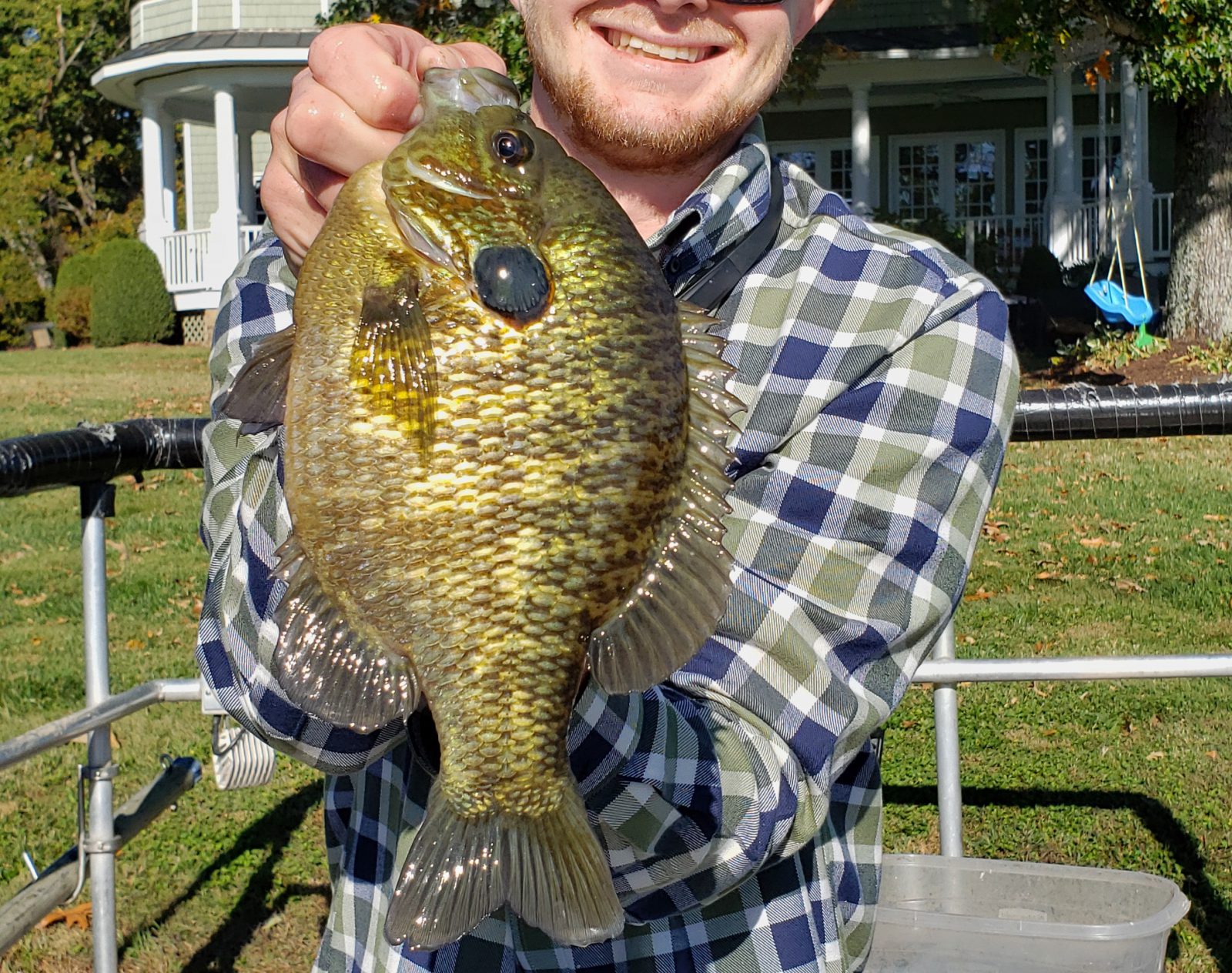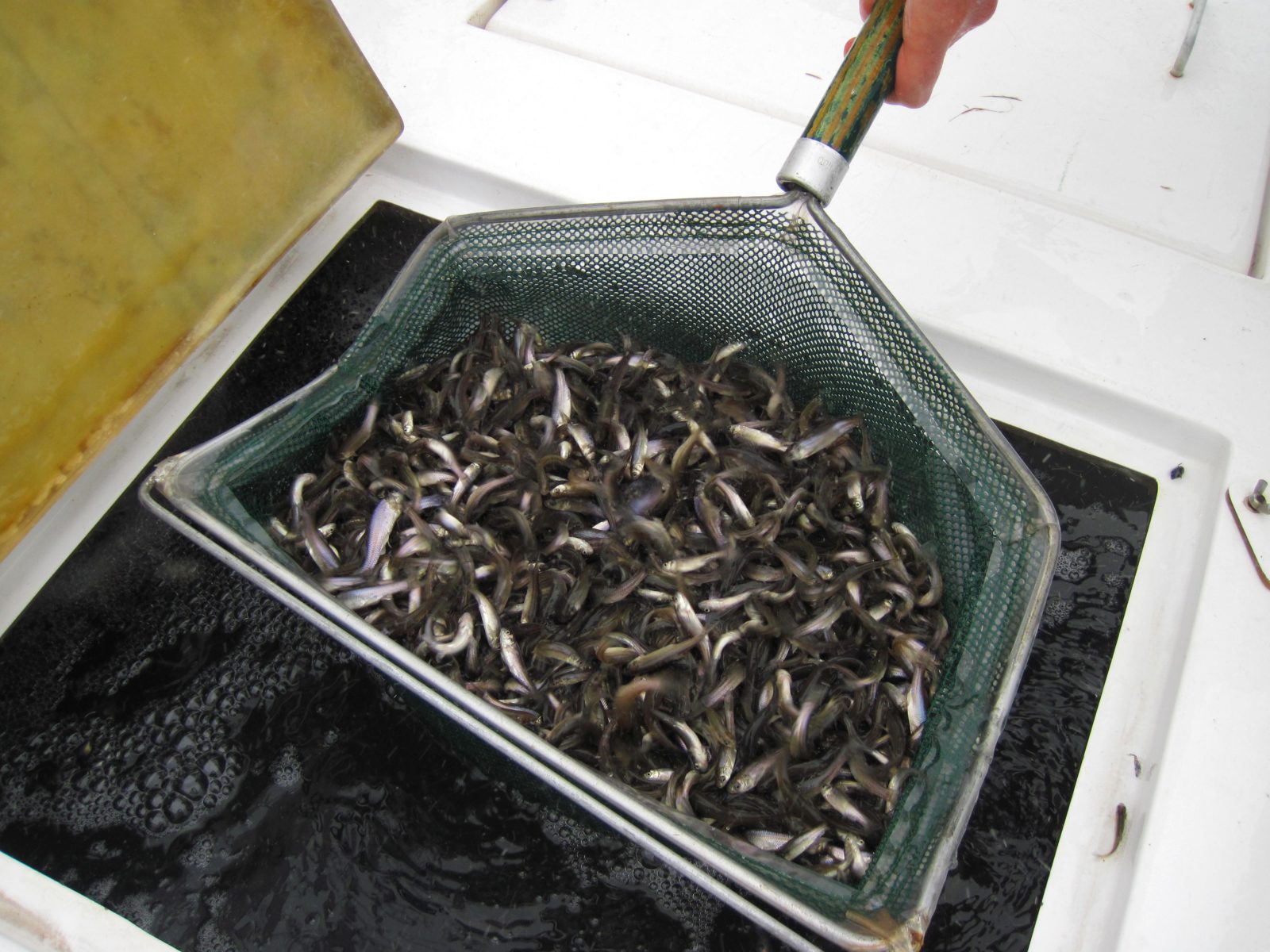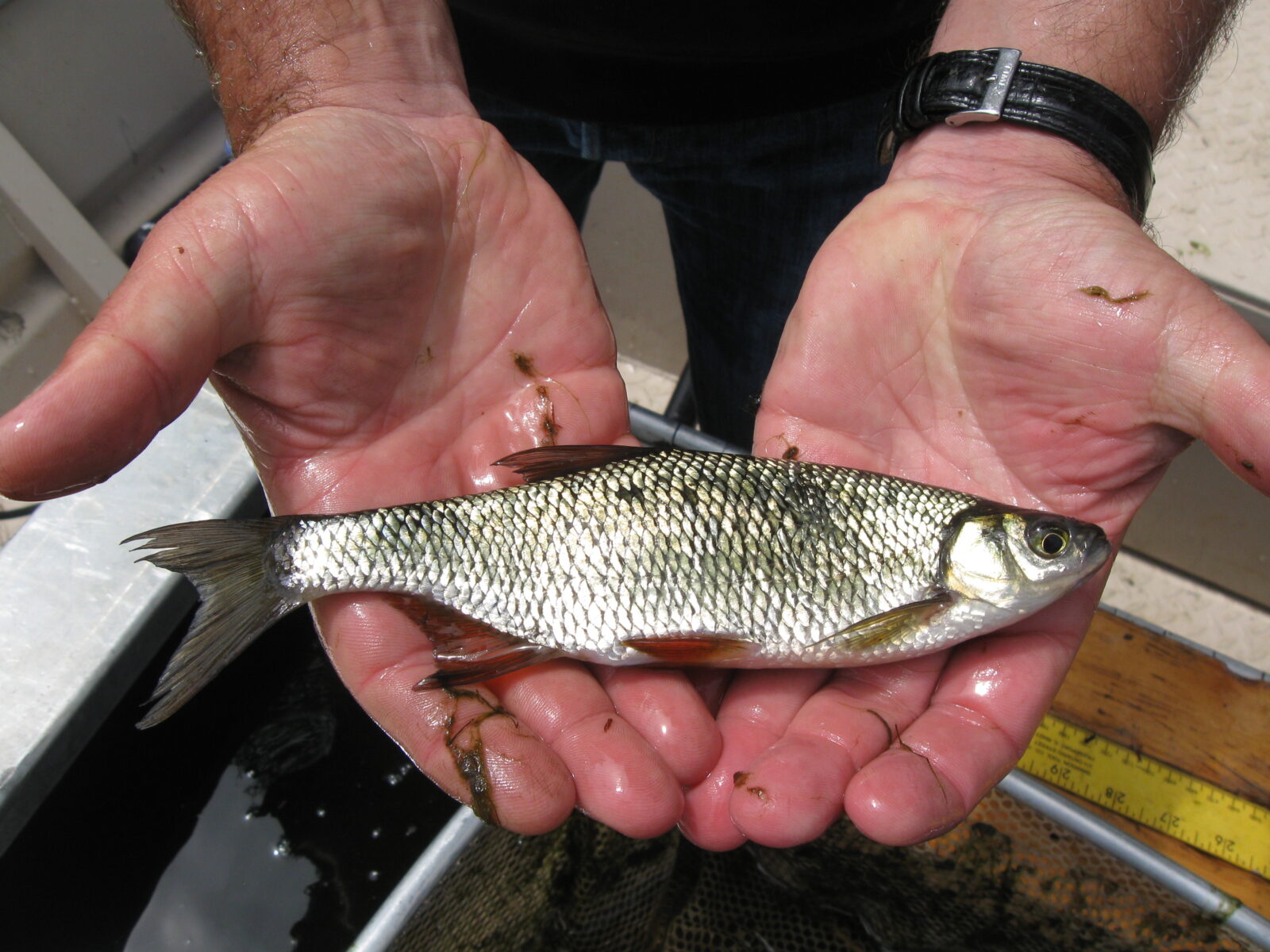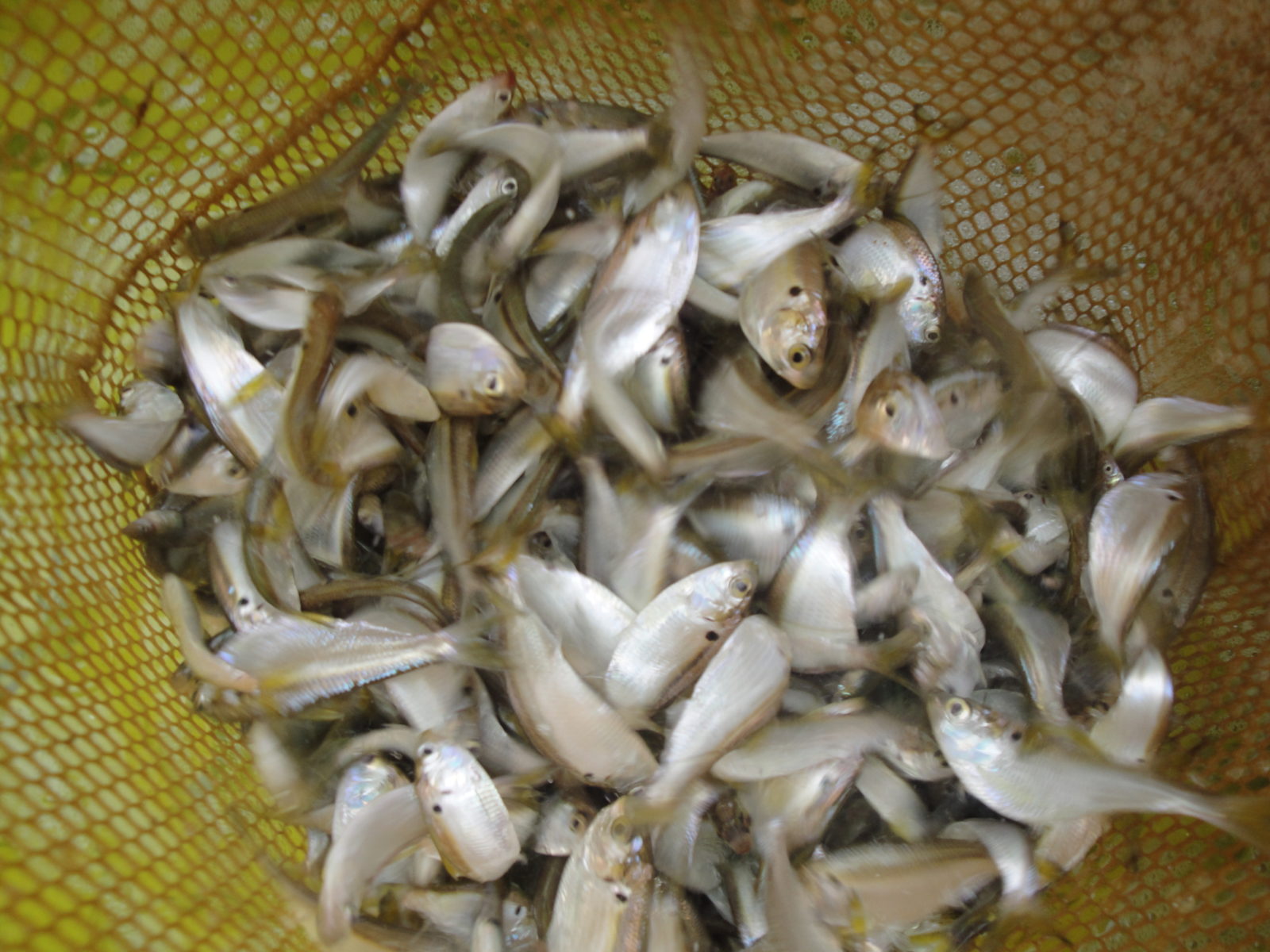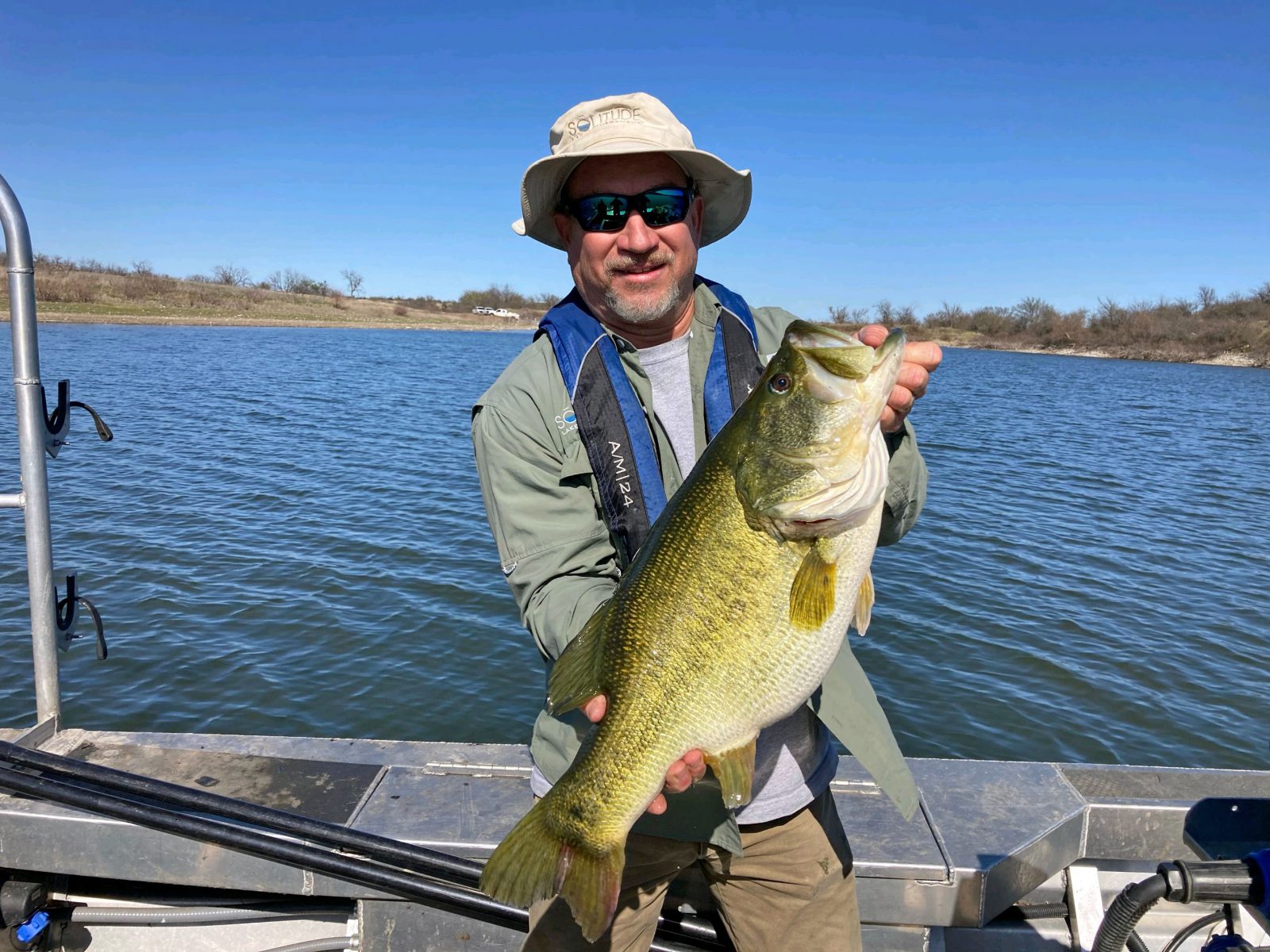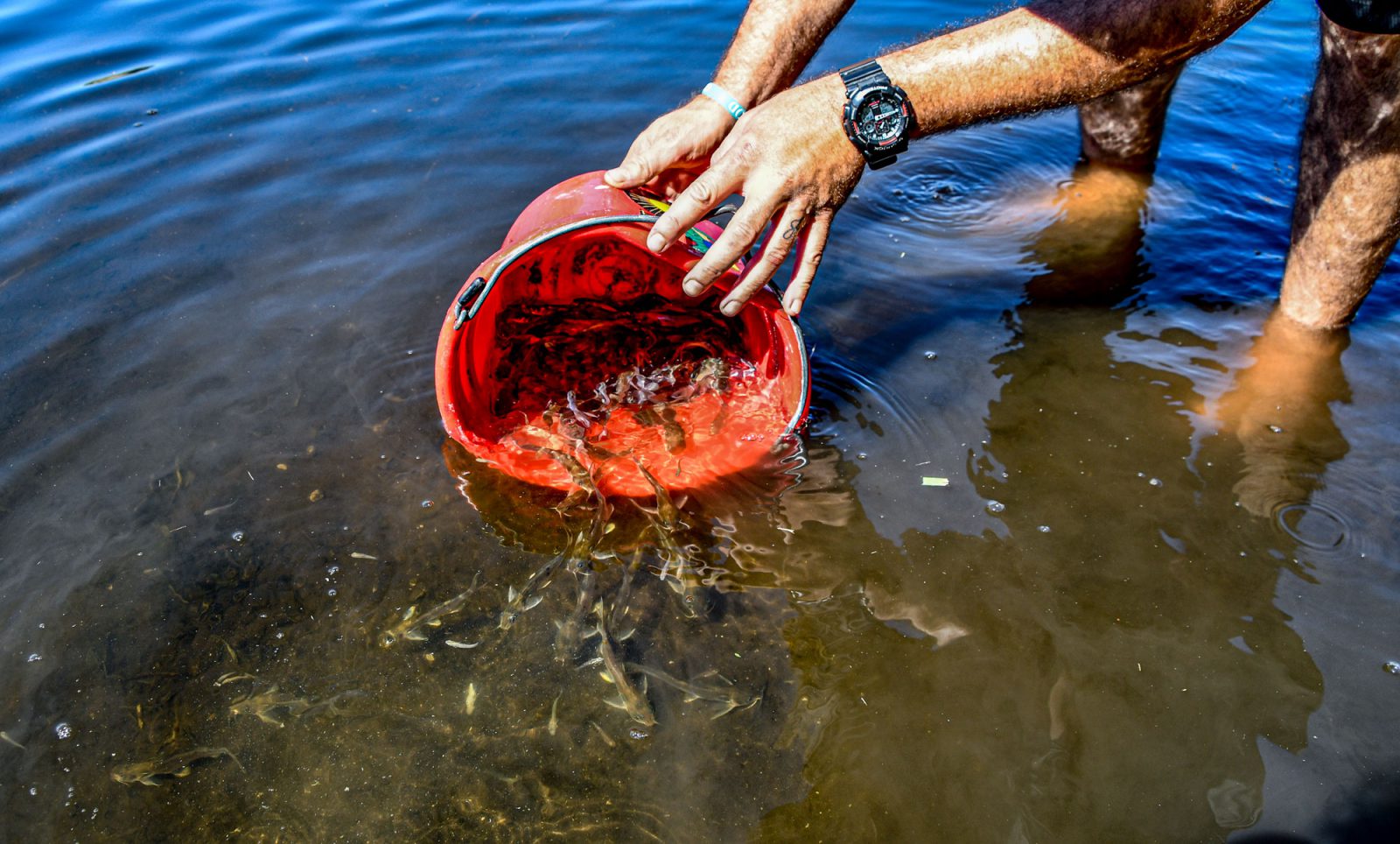
Spring Fish Stocking: Bluegill, Fathead Minnows, Golden Shiners, and Shad
Throughout the winter, fishing enthusiasts may find themselves gazing out the window at their pond, dreaming of casting their lines and feeling the thrill of a big catch. Despite the excitement, the wait for spring may be difficult. The winter months can feel long and unrelenting, but as soon as spring arrives, it’s time to take action and begin preparing for a productive year of fishing.
Spring fish stocking is one of the most impactful ways to set your waterbody up for success. Lakes and ponds with big goals can benefit greatly from the introduction of desirable forage fish. Forage fish are easily depleted, particularly in small ponds, so annual stocking is recommended to sustain their long-term benefits.
The appropriate species and number of forage fish to stock varies from property to property, but Fisheries Biologists often recommend the following species. Ultimately, a professional can work with you to evaluate your goals and determine what works best for your fishery.
Stocking Bluegill
Bluegill are a popular species known for their abundant numbers and extended spawning season that lasts from April to September. Bluegill prefer to nest in colonies on firm sand or mud, and they reach maturity in as little as one to two years. As a primary food source for Largemouth Bass, they are often stocked in lakes and ponds to maintain a balanced fishery. Regular harvesting may be required to maintain the optimal forage size. If abundant Bluegill populations are desired, professionals may recommend supplemental feeding.
During the day, they feed on a variety of organisms including plankton, insects, and plant material, and they are most active in the morning and afternoon. With a lifespan of 5 to 6 years and the ability to grow up to 10 inches in length, Bluegill can provide a long-term source of forage for predator species and create many years of exciting fishing.
Stocking Fathead Minnows
Fathead Minnows are known for their ability to tolerate turbid, low-oxygenated waters. They have a dull olive-grey body with a dusky stripe and a lighter belly, a dark blotch on the dorsal fin, and grow to an average length of 3 inches. Breeding males develop a fleshy “fat head.” In addition to serving as forage, Fathead Minnows help control nuisance mosquitoes by consuming their larvae in small impoundments and drainage ditches.
Fathead Minnows have a varied diet of small invertebrates, detritus, and algae. Spawning takes place from May to August in still water habitats along shorelines and in streams, with males selecting and preparing the nest site and guarding it from intruders. Females lay up to 10,000 eggs every 2 to 16 days during the breeding season. Fathead Minnows are a great choice for new ponds, as well as quality bluegill or sunfish ponds. They’re also excellent forage when stocked alongside small bass.
Stocking Golden Shiners
Golden Shiners are an excellent choice in supplemental forage in established trophy fisheries, as opposed to smaller minnows, because they can provide a filling meal for hungry predators. Based on the size of the predators in a pond, they can be stocked at small, medium, large, and extra large sizes. Spring stocking allows those not eaten right away a chance to reproduce and have their offspring also contribute to the food chain. Establishing a population of Golden Shiners where predators are already present will require higher stocking rates and dense refuge habitat.
The body of the Golden Shiner is deeply and laterally compressed, with a lateral line that curves toward the belly. The Golden Shiner is a slow-water fish that thrives in ponds. Spawning occurs from April to July when water temperatures exceed 68ºF. Females lay adhesive eggs in shallow water over vegetation, including filamentous algae and rooted aquatic plants. The eggs are usually broadcast with no nesting or parental care, but some Golden Shiners have been reported to spawn over the nests of both bluegills and largemouth bass.
Growth is typically rapid and maturity is usually reached at age 2, although fast-growing fish may spawn during their second summer. Zooplankton form a large part of their diet. They are also known to feed on algae, insects and eggs of other fish species. They grow 2 to 9 inches in length.
Stocking Threadfin Shad
Threadfin Shad are highly sensitive to changes in temperature and dissolved oxygen levels, and can die off when water temperatures drop below 43°F. They are known for their early maturation rates and their role as a food source for sport fish like Largemouth Bass, Hybrid Striped Bass, and Catfish. They are often used as a forage fish in many parts of the United States, but their stocking may be regulated by local and state laws.
They are stocked just prior to spawning so their offspring contribute to the food chain all summer and fall. As the water cools at the end of the season, those that remain are easily caught by Bass and other predators, allowing them to put on weight ahead of the winter.
Spawning typically occurs when water temperatures reach 70°F and the eggs adhere to objects in the water. Females can lay anywhere from 2,000 to 24,000 eggs. The young and adults are found in large schools and feed on plankton and organic debris. Life expectancy is typically 2 to 3 years and they grow to a length of 5 to 7 inches.
Develop a Fisheries Management Plan
Stocking is an essential part of an effective fisheries management program, but proper stocking practices are just as important. A responsible stocking strategy will exercise proper acclimation of fish to ensure the highest odds of success. Temperature control is imperative during fish transport, as well as before stocking if the difference in water temperature exceeds the tolerance of the species.
Alongside any stocking strategy, it’s important to develop a management program that encourages a healthy, thriving fishery. As seasons change, fish kills become a greater possibility. The installation of an aeration system can help circulate a lake or pond, introduce dissolved oxygen, and prevent stratification of the water column, which can cause a massive fish kill in just hours under the right conditions. Floating fountains, surface aerators, and submersed diffused aeration systems are suitable options for any waterbody, and can even be introduced using solar power if an electrical outlet is not available nearby.
In addition to aeration, property owners can improve the long-term success of their recently stocked fisheries by conducting regular water quality tests, employing a professional fertilization program, practicing supplemental feeding with high-quality fish feed, and managing fish habitat through the introduction of natural and artificial cover. By partnering with an experienced Fisheries Biologist, stakeholders can develop tailored management programs that make their fisheries dreams a reality.
Build Your Dream Fishery In 3 Steps
SOLitude Lake Management is a nationwide environmental firm committed to providing sustainable solutions that improve water quality, enhance beauty and preserve natural resources.
SOLitude’s team of aquatic scientists specializes in the development and execution of customized lake, stormwater pond, wetland and fisheries management programs. Services include water quality testing and restoration, algae and aquatic weed control, installation and maintenance of fountains and aeration systems, shoreline erosion control, muck and sediment removal and invasive species management. SOLitude partners with homeowners associations, golf courses, private landowners, businesses and municipalities. SOLitude Lake Management is part of Rentokil, a leading business services company, operating across the United States, Canada and Puerto Rico.
For more information, visit SOLitude Lake Management at solitudelakemanagement.com, and connect on Facebook, LinkedIn and Twitter.








